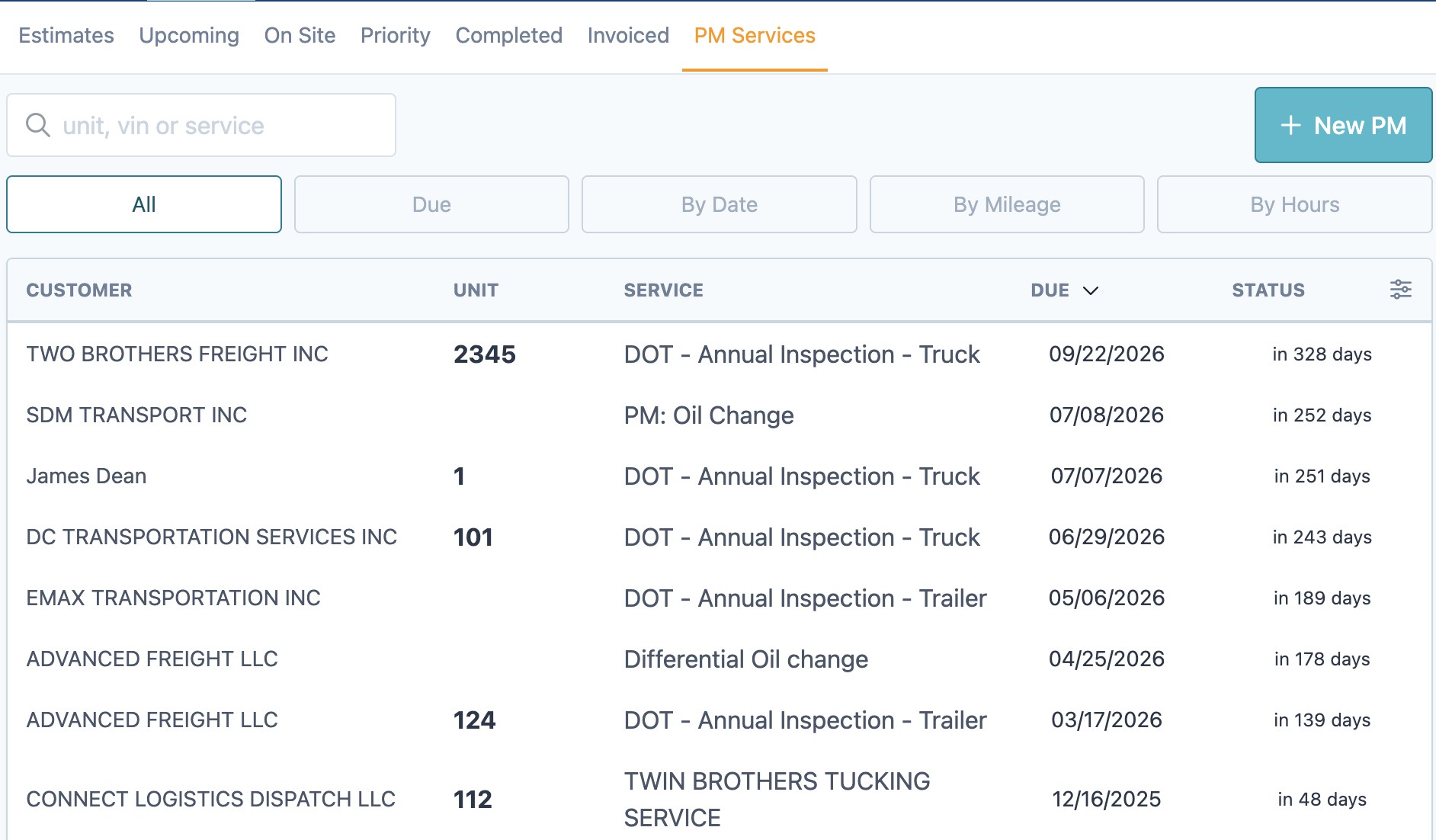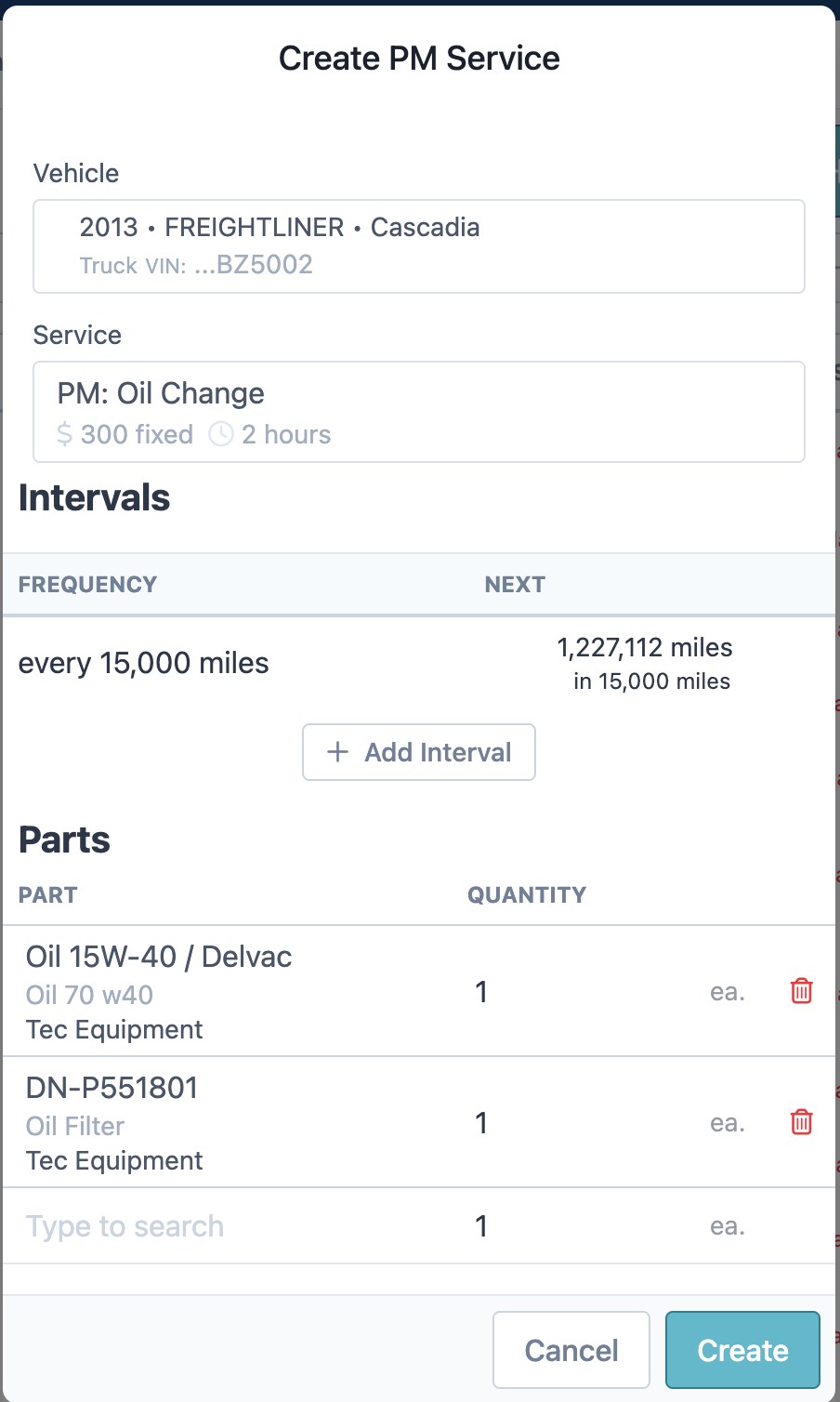

Small fleets face a unique challenge: your trucks generate revenue when they run, but manual maintenance tracking puts that revenue at risk. Small fleet maintenance software solves this problem by automating scheduling, tracking service history, and preventing costly breakdowns.
What Is Small Fleet Maintenance Software?
Small fleet maintenance software is a digital system that manages preventive maintenance schedules, tracks vehicle history, and organizes repair workflows for fleets with fewer than 50 vehicles. The software centralizes maintenance data, sends automated service reminders, and creates detailed reports to keep your operation running smoothly.
Unlike enterprise-level platforms built for massive fleets, small fleet maintenance software delivers essential features without overwhelming complexity. You get PM scheduling, service tracking, and cost analysis without paying for features you will never use.
The Business Case for Small Fleet Maintenance Software
Preventive maintenance is critical for keeping vehicles running efficiently and avoiding costly problems. When you miss scheduled services, small issues become expensive repairs that sideline trucks and drain profits.
Revenue protection drives profitability. Every hour a truck sits in the shop costs you money in lost hauling capacity, missed delivery windows, and frustrated customers. Fleet maintenance software reduces unscheduled downtime by catching problems before they become emergencies.
Automated tracking cuts administrative overhead. Your staff spends less time on spreadsheets and more time on billable work, improving your bottom line without adding headcount.

Common Small Fleet Management Challenges
Manual maintenance tracking fails when operations grow. Spreadsheets get outdated, sticky notes disappear, and service intervals slip through the cracks. You cannot scale a business on memory and paper.
Missing scheduled services creates cascading failures. Skip an oil change, and you risk engine damage that costs thousands instead of hundreds. Ignore brake inspections, and you face safety violations, fines, and potential accidents.
Disorganized service records complicate vendor relationships and warranty claims. When you cannot prove maintenance history, manufacturers deny warranty coverage and you eat the repair costs.
How Small Fleet Maintenance Software Solves These Problems
Automated scheduling eliminates missed services. The software tracks mileage and engine hours, then sends alerts when vehicles need maintenance. You schedule proactively instead of reacting to breakdowns.
Centralized record-keeping creates a single source of truth. Every service, part replacement, and inspection lives in one system accessible to your entire team. Technicians see complete vehicle history before starting work, reducing diagnostic time and improving repair quality.
Real-time reporting shows where money goes. Track maintenance costs per vehicle, identify problematic units, and make data-driven decisions about repairs versus replacement.

ETS Features for Small Fleet Management
Easy Truck Shop delivers small fleet maintenance software built specifically for heavy-duty operations. The platform handles everything from PM scheduling to invoicing without requiring IT expertise.
PM scheduling automation tracks service intervals by mileage, engine hours, or calendar days. Create custom maintenance schedules for each vehicle type in your fleet, and ETS sends automatic reminders when services come due.
Complete vehicle history stores every service order, parts list, and technician note. Access years of maintenance data instantly to diagnose recurring problems or validate warranty claims.
Inventory management tracks parts on hand, sets reorder points, and flags slow-moving stock. Stop tying up cash in unnecessary inventory while ensuring critical parts stay available.
Digital service authorization speeds approvals. Send repair estimates to fleet managers via text or email, get electronic approval, and start work immediately.

Implementing Small Fleet Maintenance Software
Start by loading your current fleet data into ETS. Enter vehicle information, current mileage, and upcoming service due dates to establish your baseline.
Configure PM schedules based on manufacturer recommendations. Set service intervals for oil changes, brake inspections, DOT checks, and other routine maintenance tasks. The software handles the tracking from there.
Train your team on core workflows. Show technicians how to clock in on work orders, parts managers how to track inventory, and service writers how to create estimates. Focus on daily tasks first, then expand to advanced features.
Monitor key metrics weekly. Review PM completion rates, average repair costs, and vehicle downtime to identify trends and opportunities for improvement.

Related Articles
Discover more articles on related topics to expand your knowledge.

21 Pro Tips on How to Run a Successful Mechanic Shop

Choosing the Best Software for Your Diesel Repair Shop

